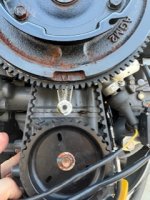Warkmeister
New member
Hello all. First post but I’ve search for weeks on this.
2006 bf9.9D6 lsha (babj1500030) starts fine, carb mix is at 3 turns out, 45 slow jet (stock), 100 main jet (stock is 102 but I run at 3-6000 ft elevation). Float height measures within range. The issue I can’t figure out is that it seems to not like or be able to rev past half throttle. Issue existed with 102 jet as well. It surges and sounds like it’s struggling to eat fuel, regardless or increased throttle position past half. Occurs under load or in neutral, with muffs or in the lake. I’ve replaced spark Plugs, which seemed to help a little, but no cure. Also replaced auto choke. I’m curious if there could be a non mechanical issue? Could the cdi be failing? Or would a bad coil behave this way?
2006 bf9.9D6 lsha (babj1500030) starts fine, carb mix is at 3 turns out, 45 slow jet (stock), 100 main jet (stock is 102 but I run at 3-6000 ft elevation). Float height measures within range. The issue I can’t figure out is that it seems to not like or be able to rev past half throttle. Issue existed with 102 jet as well. It surges and sounds like it’s struggling to eat fuel, regardless or increased throttle position past half. Occurs under load or in neutral, with muffs or in the lake. I’ve replaced spark Plugs, which seemed to help a little, but no cure. Also replaced auto choke. I’m curious if there could be a non mechanical issue? Could the cdi be failing? Or would a bad coil behave this way?


